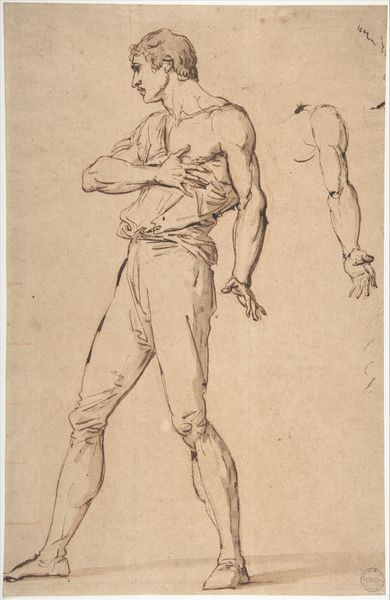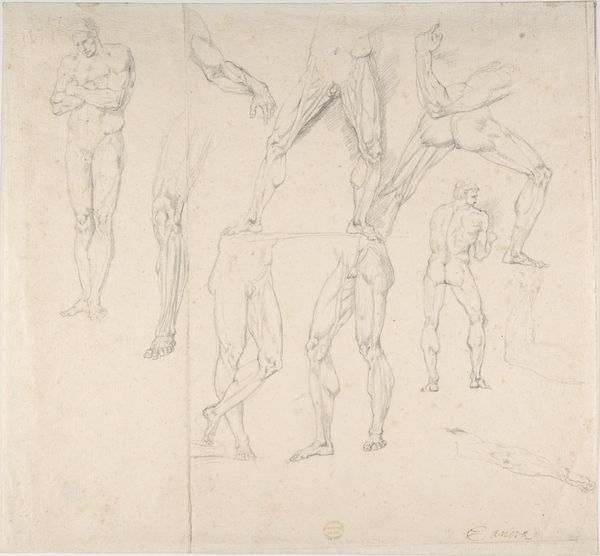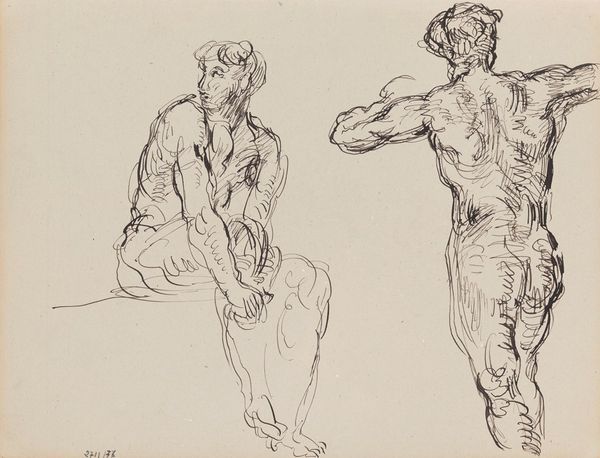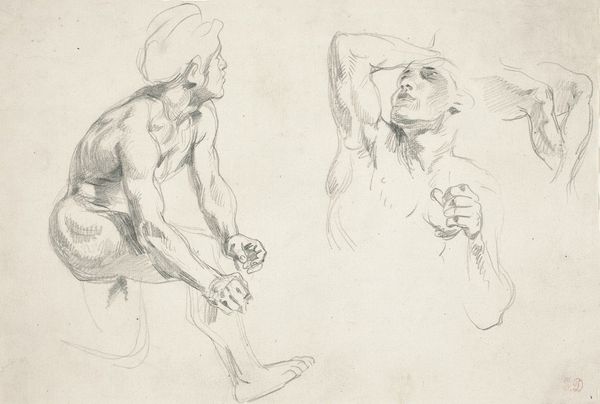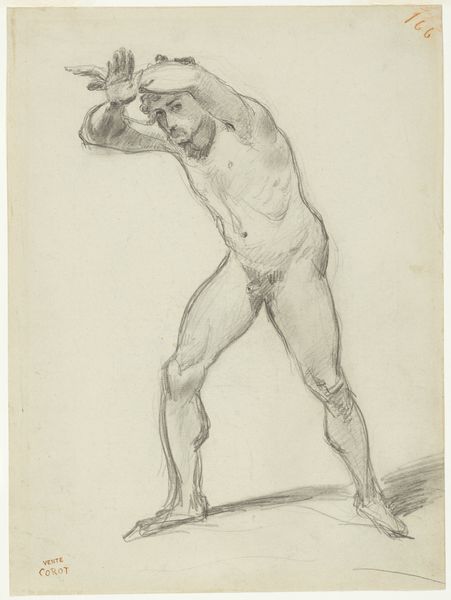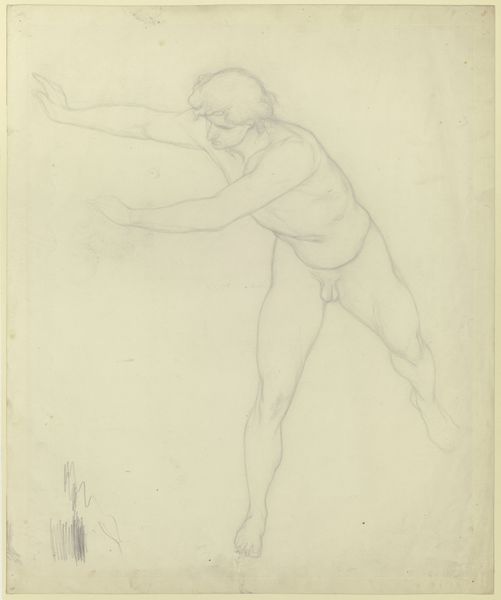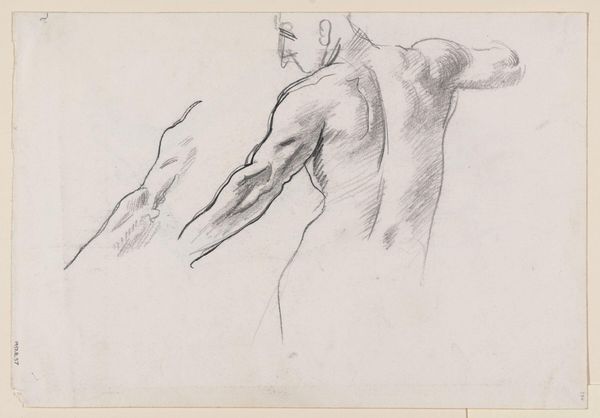
Seated and Standing Male Nudes, after photographs by Eugène Durieu 1855
0:00
0:00
drawing, print, pencil
#
portrait
#
drawing
#
ink drawing
# print
#
pencil sketch
#
figuration
#
11_renaissance
#
pencil
#
history-painting
#
academic-art
#
male-nude
#
realism
Dimensions: sheet: 9 1/16 x 10 5/8 in. (23 x 27 cm)
Copyright: Public Domain
Editor: This pencil drawing from 1855, "Seated and Standing Male Nudes, after photographs by Eugène Durieu" by Eugène Delacroix, it feels almost like a study in contrasts, with one figure posed and the other more dynamic. How do you interpret this work in light of its historical context? Curator: This drawing, born from Delacroix’s engagement with Durieu’s photographic nudes, prompts us to consider the intersection of art, science, and power in the mid-19th century. Photography, a nascent technology, was employed to "scientifically" classify and document the human body. How might Delacroix's translation of these photos into drawing either subvert or reinforce the power dynamics inherent in that act of documentation? Editor: That’s a fascinating point. I hadn't considered the power dynamic involved in using photography in that way. So, by redrawing the photos, is Delacroix potentially reinterpreting or reclaiming agency over these images? Curator: Exactly! Delacroix isn’t simply copying. He’s imbuing these figures with his artistic sensibility, potentially challenging the clinical gaze of the camera. We must also examine the prevailing social mores and artistic conventions regarding the male nude during that time. What purpose did images like these serve within the broader artistic and intellectual discourse of the era? What ideological messages are embedded within? Editor: It feels like he's humanizing the figures, taking them from object to subject, in a way. I definitely have a deeper appreciation for this work now. Curator: And by grappling with those questions, we start to see how even seemingly simple drawings can reveal complex social and cultural narratives. That critical awareness helps us connect this 19th-century sketch to contemporary issues surrounding representation and power.
Comments
No comments
Be the first to comment and join the conversation on the ultimate creative platform.

